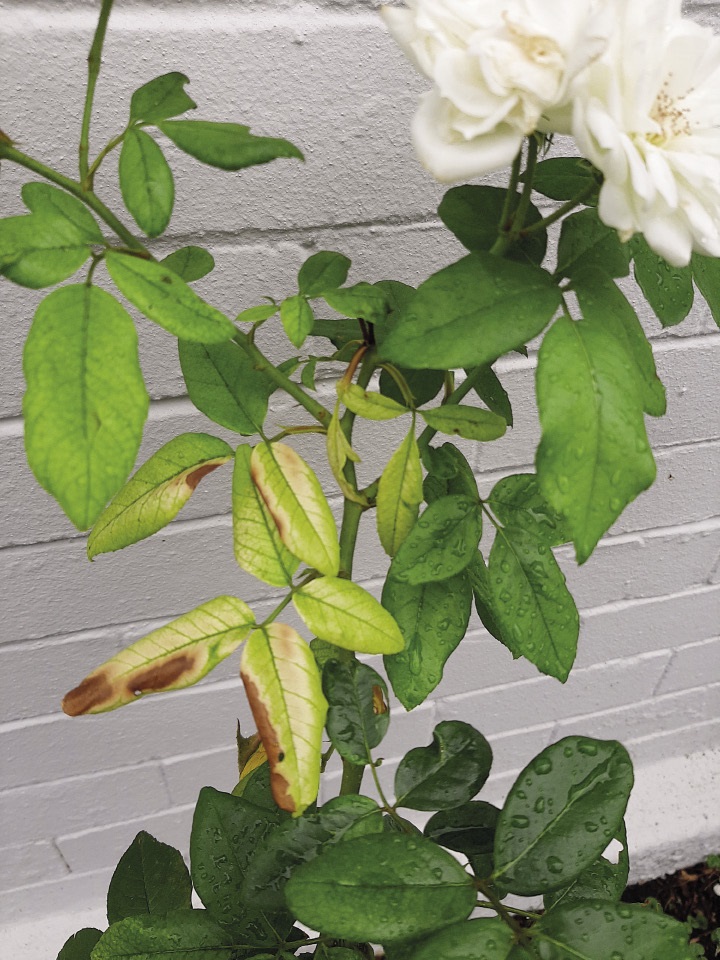Amanda van Wyk of Gordon’s Bay writes: My white ‘Iceberg’ and ‘Burgundy Iceberg’ roses are looking so sad! The new emerging leaves are yellow with dark veins, and some even look burnt. We live in a very windy coastal area, but they are not new plants and have survived many a South-Easter over the years. What could be ailing them?
Ludwig replies: The older dark green leaves are evident that the roses were able to absorb water and nutrients after last winter’s winter dormancy and pruning. However, once the roses started blooming, the communication between the leaves and roots changed, with the plant requiring more phosphate and other micro-elements for flowering and formation of seeds (hips).
Once roses have bloomed and been deadheaded, the roots need nitrogen and potash again for growth. If the roots are not able to find or absorb certain micro-elements such as iron, boron and nitrogen, the newly formed leaves will show signs of chlorosis (loss of normal green colouration). It is possible that the roots stretched to a different depth in the soil or into standing water because of all the rain.




 Publications
Publications
 Partners
Partners











